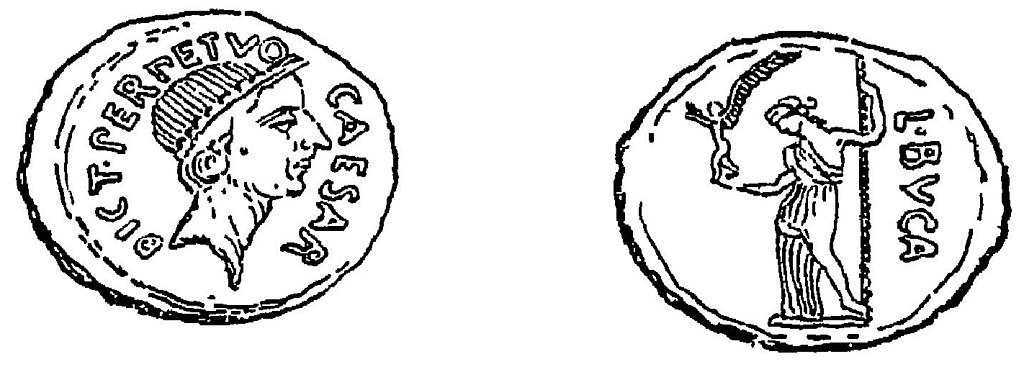Caesar’s unto Caesar
The calendar showed May 35th.
Bishop of Hong Kong said he prayed for the “hardened hearted”.
Such rhetorical flourish!
Such elegant mutedness.
Against the backdrop of the likes of Wong Por Por (黃婆婆) or even Lau Kung Tze (劉公子)!
Render unto Caesar what’s Caesar’s.
Hardly anything today tells us more about Caesar’s than what took place in London recently.
The coronation ceremony of King Charles III took place in Westminster Abbey.
Witnessed by hundreds of heads of states.
Watched over TV by billions.
It was called the Coronation Service.
Packed with Christian hymns, scriptures, and prayers.
Keen observers of the ceremony will find, pomps aside, that it was an elaborate choreography of a central theme—the kingdom and power of the sovereign came from God above.
So much for the separation of church and state in its intrinsic being!
But not all are convinced that the British monarchy is the standard bearer of universal truth.
So it is advisable to leave that for now and return later with stronger ammunition.
Turn to the relatively more modern notion of separation of church and state popularised in USA.
Many will cite anecdotes and legal precedents that say church and religious activities and artefacts are no longer sponsored or tolerated on state campuses.
Seemingly it points to the conquest of the church by the state with the former losing grounds day by day.
But little has one considered that the separation of church and state historically came from the intent, and indeed practice, to ensure that the state “could not coerce” religion.
That is readily obvious.
Just consider this.
The state with all the resources in its pocket could have moved to obliterate any religion, whether it is orthodox ones such as Catholicism or Protestantism, or far out ones like Satanism or Scientology!
Separation of church and state serves to protect and maintain integrity of every religion, irrespective of their moral or spiritual superiority, and not to eradicate religion from daily lives of ordinary citizens.
How little do people now who clamour for it grasp its historical imperative?
Whom it was devised for, religion, government, or people who are powerless?
But then, return to the historical and intrinsic.
Coin of Caesar (James Leigh Strachan-Davidson / Henry Cohen, Public domain, via Wikimedia Commons)
It’s so popular these days to cite this:
“Then render to Caesar the things that are Caesar’s; and to God the things that are God's.” (Mt 22:21, NASB)
Many welcome this saying as if it legitimises their preferences.
Those so-called Christian HK political legislators.
Those muted HK Chinese preachers.
Those HK domesticated Christians wanting the least rupture to stability and property.
Mt 22:21 is a handy charm to hoist up against the evil of “black violence”!
It’s like an electric whip to the lions; so useful on the unthinking congregation, lambs to the slaughter.
But did Jesus there circumscribe His own claim on monarchy, society, humanity, and universe?
Would the Jesus known to generations have had to draw a circle for himself outside of which all belongs to Caesars?
Just consider this:
Would Jesus intend to divide into two parts, only one of them belongs to God?
Or would Jesus intend to delimit God’s own claim on the world?
Or rather, Jesus meant to show which of the two, Caesar or God, reigns supreme and has the sole claim to all?!
Many despots and domesticated subjects would perhaps have chosen the first two worldviews.
Alas! Read the gospel and it becomes resoundingly clear that Jesus sounded the clarion bell to toll the death of secular ownership over humanity.
The pericope within which situates Mt 22:21, hinges on a coin on which was engraved an image.
The word “image” unavoidably echoes Creation in Genesis.
The question of Jesus on surface appears to ask “whose image it is and whose ownership it is?”
That’s if readers are willing to assign equal gravity to the two: Caeser and God.
But if it is conceded that the first half, that’s Caesar, might be a set up for the climax that belongs to the second half, then clarity is magnified.
The emphasis is to get to the bottom of this:
“Whom would all humans owe lives to if their faces were the image of the creator God?”
It’s no longer dividing the part that belongs to Caesar, Rome, Buckingham Palace, Beijing, and even Government House/Central Government Offices.
Even the Liaison Office of the Central People’s Government.
As opposed to God.
It’s about asking the fundamental question:
Who has ownership of those who bear the image of the owner?
And who bears the image of God if not humans?!
Wouldn’t that question linger even after Jesus’ audience in Mt 22 had paid their tax to Rome?
If Caesars image was engraved on the coin, whose image was on the audience of Jesus, and by extension, all humans?
Where does one draw the line on separation of church and state?
Doesn’t the coronation service get closer to the metaphysical truth, pomps aside?
It’s such a hard truth to swallow.
Bishop of HK is exposed naked.
Leading pastors and professors are exposed naked.
Those who chose mutedness in exchange of a living in Hong Kong or, a so-called ministry in HK, are too shamefully exposed.
Those decided to function in any advisory role to the Government even more so!
To quote Jack Nicholson: you can’t handle the truth!
